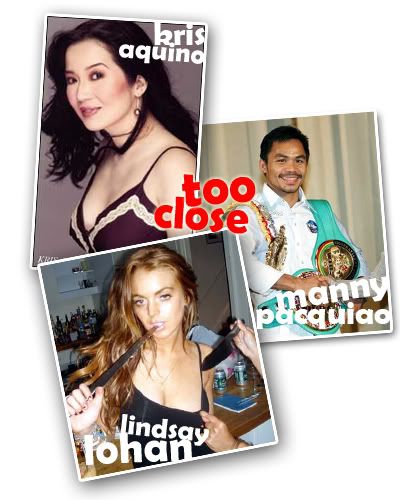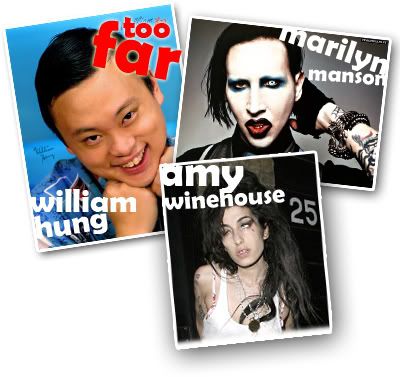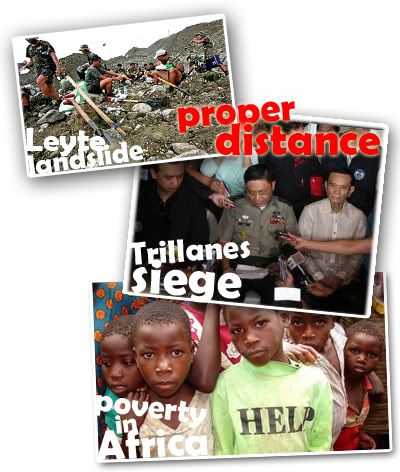Ateneo de Manila University
Com11 E
Aurelio, Camacho, Enriquez, Gabionza, Hui, Magalona, Wee

When media is able to create the illusion that the self and the other are devoid of differences, having a "too close" perspective is committed. Although it is considered a privilege to be able to peek in to the lives of different celebrities, the media's depiction of personalities such as Lindsay Lohan, Kris Aquino and Manny Pacquiao allows the self of any viewer to closely associate himself with the subject, therefore blurring identity and individuality among people.

Media falls under the perspective of "too far" when it fails to recognize the subject as an individual. The portrayal pushes the subjects to a point that they have striking and bizarre traits. Marilyn Manson, William Hung, Amy Winehouse, and anyone who has been tagged as being 'eccentric', may be viewed more as what they appear to be, rather than what they really are: human beings. As a result, they are viewed as though they are strange and out of this world.

A “proper distance” perspective is defined as having a sense of steadiness in the depiction of any media-related subject. The collage above gives a fairly balanced picture of the events that are part of man’s history. This is so because the media’s portrayal of these occurrences to many people maintains the respect for diversity and similarity of the viewer with the “other”.
.




No comments:
Post a Comment